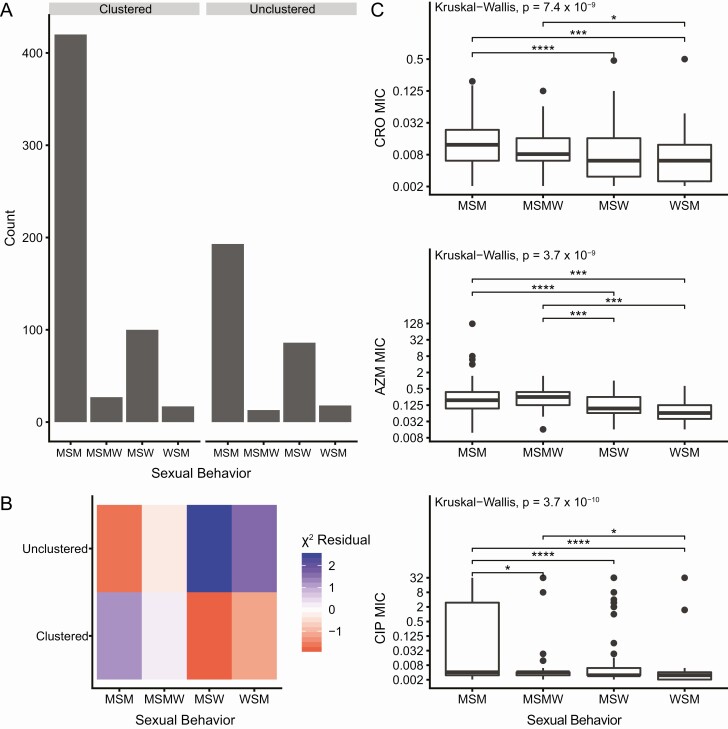Figure 2.
Sexual behavior groups are associated with clustering and antibiotic susceptibility. A, Sexual behavior groups and clustering are associated. Isolates were considered clustered if they were grouped with at least one other isolate in the dataset using the 10 nonrecombinant SNP cutoff. We identified a significant association between sexual behavior groups and whether or not an isolate was clustered (P = 5.0 × 10−4). B, Clustered isolates are associated with MSM, and unclustered isolates are associated with heterosexuals. The χ 2 residual for each category is displayed where blue represents more isolates than expected for the category and red represents fewer isolates than expected for the category. C, MSM-associated isolates have higher MICs across antibiotics (including cefixime, P = 3.3 × 10−5). Significant pairwise comparisons are denoted by a bracket and asterisks (* P < .05, ** P < .01, *** P < .001, **** P < .0001). Abbreviations: AZM, azithromycin; CIP, ciprofloxacin; CRO, ceftriaxone; MIC, minimum inhibitory concentrations; MSM, men who have sex with men; MSW, men who have sex with women; MSMW, men who sex with men and women; WSM, women who have sex with women.

